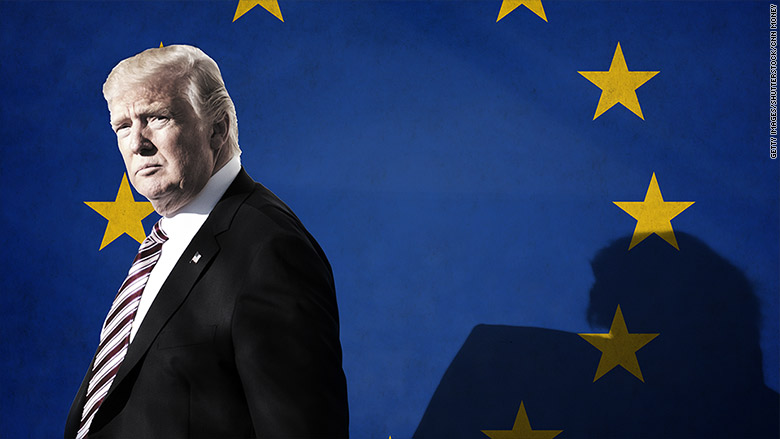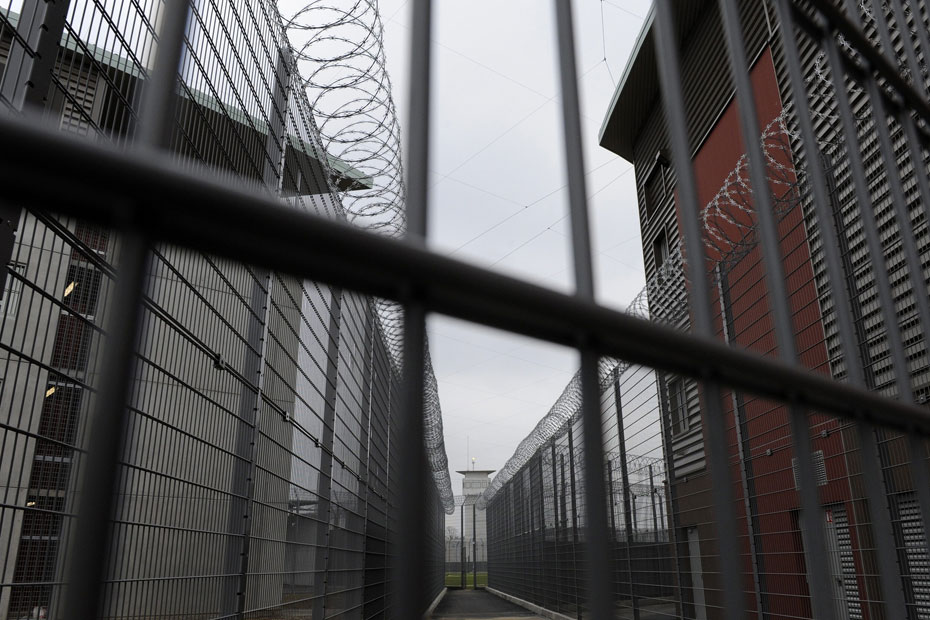Trump Vs. Europe: The Reasons Behind His Trade Tirades

Table of Contents
America First: Protectionist Ideology and National Security Concerns
Trump's "America First" agenda was a central tenet of his trade policy, prioritizing American jobs and industries. He viewed European imports as a direct threat to domestic manufacturers, leading to a series of protectionist measures.
Prioritizing Domestic Industries
Trump's administration frequently framed its actions as necessary to protect American jobs and industries. This was particularly evident in the imposition of tariffs.
- Focus on steel and aluminum tariffs: The justification for these tariffs was national security, arguing that these materials were critical for defense industries. However, this rationale was widely debated, with critics suggesting the true aim was protectionist.
- Impact on automobile industry: Threats of tariffs on imported cars from Europe sent shockwaves through the automotive sector, highlighting the potential for widespread disruption caused by Trump's trade policies. The uncertainty created by these threats hampered investment and planning.
- Retaliatory tariffs from the EU: The EU responded to Trump's tariffs with its own retaliatory measures, escalating the trade war and harming businesses on both sides of the Atlantic. This tit-for-tat exchange exemplifies the complexities and negative consequences of trade disputes.
Addressing Trade Deficits
A significant driver of Trump's trade policy was the persistent US trade deficit with Europe. He viewed this deficit as evidence of an unfair trade relationship that needed immediate correction.
- Emphasis on bilateral trade balances: Trump's focus on bilateral trade balances ignored the complexities of global trade flows, where goods and services often transit multiple countries before reaching their final destination. This simplistic view failed to acknowledge the interconnected nature of the global economy.
- Use of tariffs as a tool to reduce deficits: The administration employed tariffs as a primary tool to reduce the trade deficit. However, economists largely agree that tariffs are not an effective or efficient way to achieve this goal, often leading to higher prices for consumers and harming businesses.
- Limited success in significantly altering trade balances: Despite the imposition of significant tariffs, Trump's administration saw limited success in significantly altering the trade balance with Europe. This underscores the limitations of using protectionist measures as a solution for complex economic imbalances.
Discontent with Existing Trade Agreements
Trump openly expressed his discontent with existing trade agreements, viewing them as unfavorable to the US and benefiting Europe disproportionately. This fueled his drive for renegotiation and, in some cases, withdrawal from international trade organizations.
Criticism of the WTO
Trump frequently criticized the World Trade Organization (WTO), its dispute settlement system, and its perceived bias against the US.
- Accusations of unfair trade practices by European countries: The Trump administration frequently accused European countries of engaging in unfair trade practices, citing issues such as subsidies and anti-competitive behavior.
- Withdrawal threats from the WTO: Trump threatened to withdraw the US from the WTO, highlighting his dissatisfaction with the organization's effectiveness and fairness. While the US did not ultimately withdraw, the threats themselves created uncertainty and instability in the global trading system.
- Limited success in reforming the WTO to meet Trump’s demands: Despite calls for reform, Trump's efforts to reshape the WTO to align with his vision were largely unsuccessful. This further fueled his frustration with the existing multilateral trade system.
Renegotiation Attempts
Trump's administration actively sought to renegotiate existing trade agreements with Europe, aiming to secure more favorable terms for the US.
- Focus on reducing trade barriers and improving market access for US goods: The administration focused on reducing trade barriers and improving market access for American goods in Europe. This involved intense negotiations and frequent threats of further trade actions.
- Limited success in achieving significant changes to existing agreements: Despite considerable effort, the Trump administration achieved limited success in significantly altering existing trade agreements with Europe. Negotiations were often characterized by aggressive tactics and public disagreements.
- Negotiations often characterized by aggressive tactics and threats: Trump's negotiating style was often described as aggressive, employing threats and public pressure tactics to try and force concessions from European counterparts. This approach often proved counterproductive, harming relationships and undermining the potential for mutually beneficial agreements.
Political and Electoral Considerations
Trump's trade policies were inextricably linked to domestic political calculations and his efforts to appeal to his electoral base.
Appealing to Working-Class Voters
Trump's tough stance on trade resonated strongly with working-class voters who felt negatively impacted by globalization and foreign competition.
- Use of protectionist rhetoric as a campaign tool: Trump effectively used protectionist rhetoric as a central campaign tool, tapping into widespread anxieties about job losses and economic insecurity.
- Focus on jobs and economic security as major electoral themes: His emphasis on jobs and economic security resonated deeply with voters who felt left behind by the changing global economy. This populist message significantly influenced his trade policy decisions.
- Impact on political alliances and trade negotiations: This focus on domestic political appeal influenced the tone and strategy of trade negotiations, sometimes at the expense of long-term international cooperation.
Distraction from Other Issues
Some analysts argue that the trade war with Europe served as a distraction from other political challenges and controversies facing the Trump administration.
- Shifting public attention away from domestic issues: The trade disputes provided a convenient focal point, diverting attention from domestic issues and controversies.
- Using foreign policy as a domestic political tool: The trade war was, in some respects, used as a tool of domestic politics, leveraging foreign policy issues to consolidate support among specific segments of the electorate.
- Impact on diplomatic relations and international credibility: The aggressive approach to trade negotiations damaged relationships with key allies and diminished the international credibility of the United States.
Conclusion
Trump's trade policies toward Europe were a complex interplay of protectionist ideology, concerns about trade deficits, dissatisfaction with existing agreements, and domestic political considerations. While his actions aimed to reshape the US-EU trade relationship, the ultimate impact of Trump's trade tirades remains a subject of ongoing debate, but it undoubtedly left a lasting mark on transatlantic relations and global trade dynamics. Understanding the multifaceted reasons behind Trump’s trade policies toward Europe is crucial for navigating the future of US-EU trade relations and avoiding similar conflicts in the future. To learn more about the ongoing impact of these policies, further research into the effects of tariffs on specific sectors and the evolving dynamics of the transatlantic relationship is recommended. Analyzing the long-term implications of Trump's trade policies toward Europe will help us better understand the intricacies of global trade and the role of political leadership in shaping international economic relations.

Featured Posts
-
 Donald Sutherlands Underrated Role In Pride And Prejudice A Rewatch Review
May 26, 2025
Donald Sutherlands Underrated Role In Pride And Prejudice A Rewatch Review
May 26, 2025 -
 Meta Israels 2024 Holocaust Remembrance Day Instagram Project Israeli Celebrities Participate
May 26, 2025
Meta Israels 2024 Holocaust Remembrance Day Instagram Project Israeli Celebrities Participate
May 26, 2025 -
 Exploring The Hells Angels Subculture And Identity
May 26, 2025
Exploring The Hells Angels Subculture And Identity
May 26, 2025 -
 Sutton Hoos Mysterious Sixth Century Vessel A Burial Urn For Cremated Remains
May 26, 2025
Sutton Hoos Mysterious Sixth Century Vessel A Burial Urn For Cremated Remains
May 26, 2025 -
 Paris Welcomes Queen Wen Again
May 26, 2025
Paris Welcomes Queen Wen Again
May 26, 2025
Latest Posts
-
 Integrale Europe 1 Soir 19 Mars 2025 Replay
May 30, 2025
Integrale Europe 1 Soir 19 Mars 2025 Replay
May 30, 2025 -
 Florange Remplacement Des Rats Parents D Eleves De Bouton D Or Preoccupes
May 30, 2025
Florange Remplacement Des Rats Parents D Eleves De Bouton D Or Preoccupes
May 30, 2025 -
 Emission Integrale Europe 1 Soir 19 03 2025
May 30, 2025
Emission Integrale Europe 1 Soir 19 03 2025
May 30, 2025 -
 Europe 1 Soir Version Integrale Du 19 03 2025
May 30, 2025
Europe 1 Soir Version Integrale Du 19 03 2025
May 30, 2025 -
 19 Mars 2025 Ecouter L Integrale D Europe 1 Soir
May 30, 2025
19 Mars 2025 Ecouter L Integrale D Europe 1 Soir
May 30, 2025
